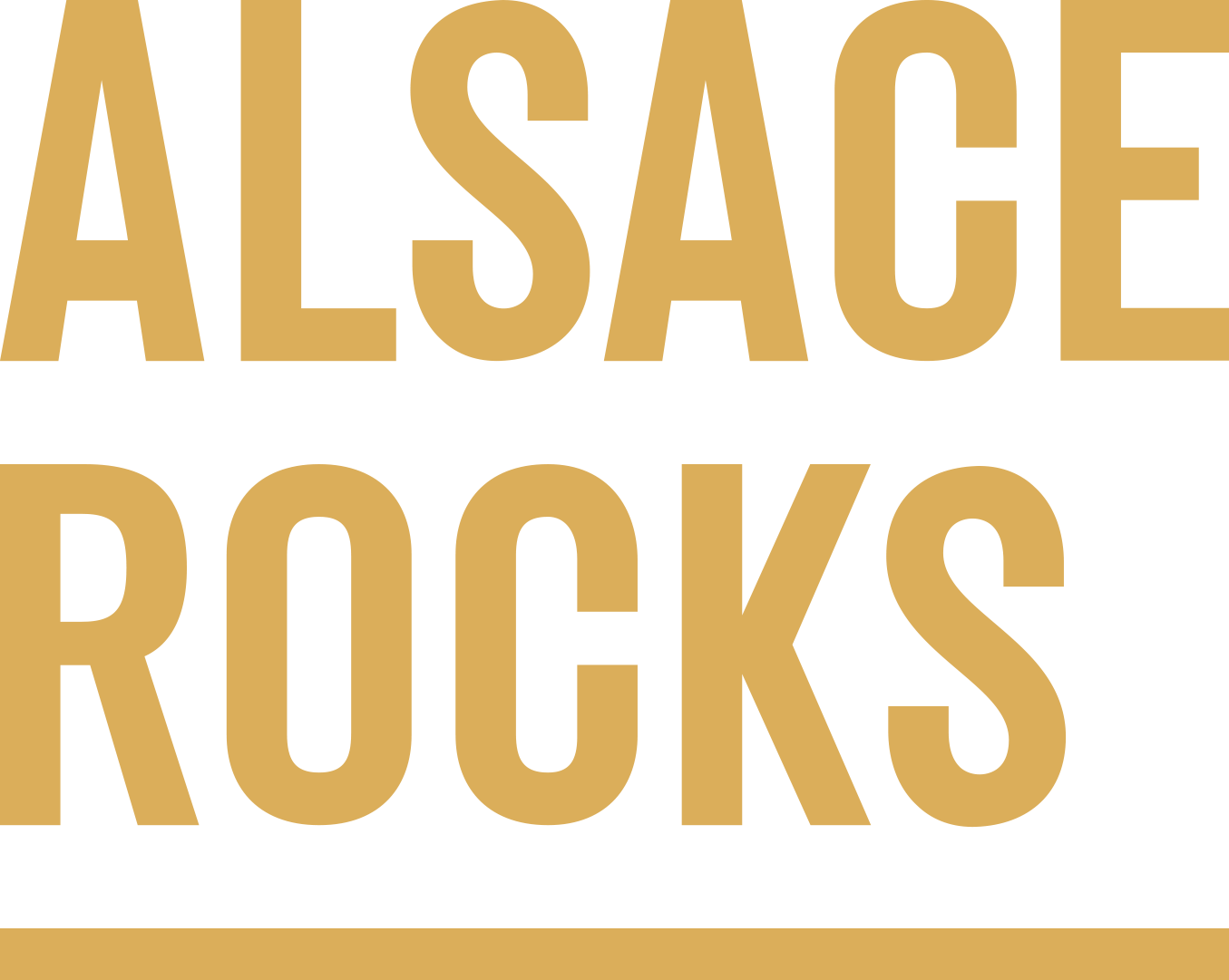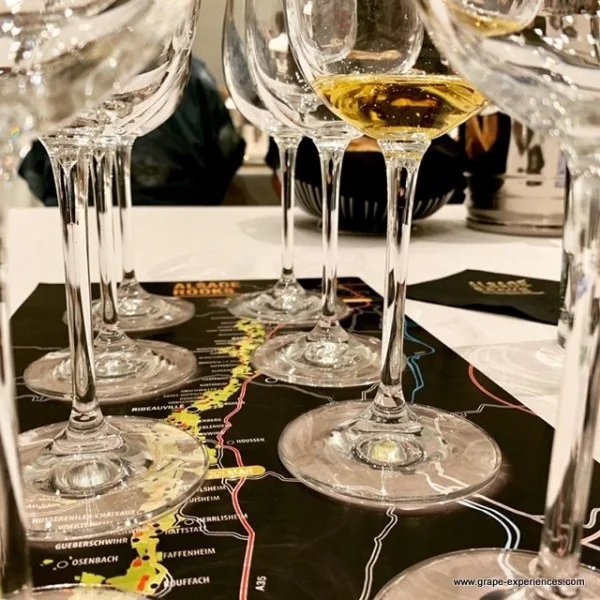When the French #Winophiles, an extraordinary group of wineloving writers who crave all things French, have a roundup of articles about a specific topic, I’m in. This month, our theme is French Wine and Cheese and honestly, I don’t know anyone who can’t wrap their palate around both! From Bordeaux to Provence and everywhere in between, beautiful wines can be complemented with a flavorful cheese. And just like le vin, les fromages have their own AOC (Appellation d’Origine Contrôlée) or AOP (Appellation d’Origine Protégée) designation to indicate the region or village from where the cheese is produced.
The Wines of Alsace
Having just attended Alsace Rocks, an incredibly organized and compelling master class and tasting of a wide variety of wines, I knew that pairing cheeses with so many varieties from the region would be a lesson in deliciousness (and information to have in our back pocket for the next gathering of friends and family)! Throughout the event, I was impressed with the plethora of wines and their unique expressions of terroir.
Located in the northeastern corner of France, Alsace boasts a geological diversity like no other region in the world as it follows the long and narrow Rhine River. The Vosges Mountains provide stunning scenery for anyone who desires to journey upon the Alsace Wine Route, a 106-mile path through more than 100 bucolic wine villages. (Click here and be inspired to plan your trip. Perhaps I’ll see you there!)
Although many think of Riesling as the only white grape produced in Alsace, the region is actually responsible for six other varieties. Exuding styles ranging from light-bodied and fresh to full-bodied and bold, mouthwatering and flavorful Riesling, Pinot Gris, Pinot Blanc, Gewurtztraminer, Sylvaner, Muscat and Pinot Noir are cultivated. The wines I tasted at Alsace Rocks prove that this region offers exceptional food friendly wines to more than satisfy any palate.
In Alsace, 53 appellations have been designated. Wines from AOC Alsace are affordable and easy drinking, Cremant d’Alsaceare sparkling wines produced in the traditional method and the 51 unique Grand Cru appellations offer wines of rich complexity and structure. Soils are just as diverse as the wines. Clay, limestone, granite, calcareous-limestone, marl, dolomite, gypsum and Keuper are soils those upon which premium vineyards are located. (Please click here to learn more details about these fascinating wines.)
Pairing Wine and Cheese
How about those wine and cheese pairings? The process may be an intimidating exercise for many of us. With so many choices, where do we begin?
I referred to a wonderful resource, Tasting Wine & Cheese by Adam Centamore, for guidance. He writes that “pairing is bringing two or more ingredients together in a way that creates an impression that is grander than the ingredients alone provide.” We must consider dominant flavors, dominant tastes, temperature, texture, spice, tannins in the wine, fat and salt. The trick is to identify your own preferences and decide whether to pair a wine that contrasts or complements the cheese… or vice versa. Of course, everyone’s palate is different, so experiment – anything goes if you love it!
I usually begin my pairing process by considering the style of cheese (creamy, soft and young; hard, aged, salty and sharp, blue and filled with aromas; or fresh, mild and easily spreadable) that I’d like to try with a specific wine. Like Centamore, I decide whether to complement or contrast the wines and cheeses… A light Sauvignon Blanc with a light Brie or a bold Cabernet with an aged Cheddar? The possibilities are endless.
Armed with information from Centamore’s book and conversations with local cheese experts, I compiled a list of some of my favorite wines tasted at Alsace Rocks with delectable cheeses for a memorable pairing. Enjoy!
Wines from Alsace and Cheeses for Pairing
Famille Hugel Pinot Gris Classic 2016 ($17) was not only refreshing, but an affordable choice for anyone who craves this variety from Alsace. In this wine, the grapes were cultivated on soils of clay and limestone. Of a more heavy and complex style than its Italian counterpart, Pinot Grigio, I appreciated this wine’s floral aromas, notes of green apple and lush fruits and its crisp finish. Pair Roelli Haus Select Cheddar Pasteurized Cow milk from Annatto WI, Brebirousse d’Argental of sheep milk from France, or pressed-rind cheeses such as Comté, Beaufort, Appenzeller and Gruyère.
The stunning Weinbach Riesling Grand Cru Schlossberg Cuvée Ste Catherine 2016 ($62) from vineyards planted on granite soil, was beautifully aromatic with lively acidity. Dry, complex and structured, rich aromas and flavors are guaranteed to be a luscious companion with cheeses that have body and weight. Pair this Grand Cru Riesling with Tomme de Savoie or Morbier, both of cow’s milk from France, von Trapp Oma of cow’s milk from the United States, your favorite creamy goat cheese or medium-bodied Gruyère and Cheddar.
Willm Gewurztraminer Reserve 2015 ($15), of grapes grown from vines on soil of gravel, clay, limestone and sandstone, burst with aromas of lychee, petrol and rose petals. On the palate, notes of spice with mangos, peaches, apricot and ginger were mesmerizing. And the cheeses for pairing? How about a few that have as much flavor and aromas as the Gewurtztraminer? Terre des Volcans Fourme d’Ambert Pasteurized Cow Blue from the Auvergne, Hooligan of cow’s milk from the United States, Ardrahan of cow’s milk from Ireland or a delectable Parmigiano-Reggiano will be memorable.
Four wines of Pinot Blanc, each grown on clay soil, Domaine Pfister Pinot Blanc 2017 ($30), Domaines Shlumberger Pinot Blanc les Princes Abbes 2017 ($17), Kuentz-Bas Pinot Blanc 2016 ($15) and Famille Hugel Pinot Blanc Cuvée les Amours 2016 ($15) were refreshing, dry and crisp with notes of citrus and snappy minerality. Pair a favorite Brie or one with washed rind such as Tallegio or Fontina for a lovely contrast.
Paul Blanck Muscat d’Alsace 2016 ($13) was of 65% Muscat d’Alsace and 35% Muscat Ottonel grown in vineyards on gravel, sand and calcareous clay. On the nose and palate, I found a wine that was bright and vibrant with elements of citrus, white flowers and just the slightest hint of spice. For pairing, keep it simple and choose fresh ricotta, a mild and creamy bleu cheese, a smoked Provolone or Gorgonzola.
Camille Braun Sylvaner Vin Nature 2018 ($25.99) was of grapes cultivated on sandstone soil. Vibrant acidity framed notes of honey, melon and chalk and this fresh, delightful wine will be a lovely pairing with generous slices of Manchego, Edam or Gouda.
A 100% Pinot Noir grown on soils of granite with blue marne, the Rolly Gasssmann Pinot Noir 2015 ($29.99) was balanced and structured with fresh red fruit, earth and a hint of spice. Flavorful cheeses for pairing may be a light Cheddar, Comte, Gouda, Gruyère, Port Salut or French Chévre.
I savored sips of Crémant d’Alsace before the tasting… and afterwards. What a delicious, refreshing way to prepare my palate for so much deliciousness and to end the day with more. The lovely Jean-Baptiste Adam Crémant d’Alsace Bio les Natures NV ($15) was of 100% Riesling and produced in the same manner as Champagne (the second fermentation takes place in the bottle). This delightful bubbly is from vines grown on granite and limestone soil. Due to its minerality, bright acidity and vibrant citrus flavors, choose Marieke Young Gouda with Foenegreek Farmstead Raw Cow Milk from Thorp, Wisconsin, a savory aged Comte Fort Saint-Antoine or a French Gruyère aged for ten months for a surprise taste sensation.
Cheers! ~ Cindy











